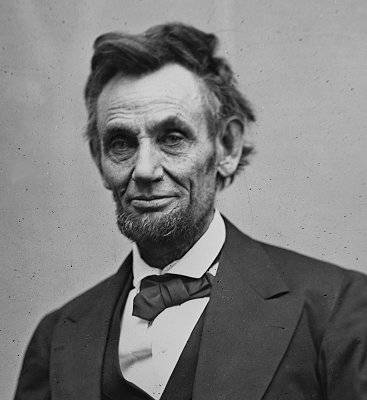Happening Now
Combating the no-growth, no-development outlook on infrastructure
July 24, 2012
Written By Sean Jeans Gail

As election season looms, it is tempting to fall into the trap of seeing every issue through a partisan filter—to try and find a place for every tough question on a red/blue spectrum. Recently released letters from the American Road & Transportation Builders Association serve as important reminders that there’re other ways of approaching problems. The letters—directed at the Republican National Committee (RNC) and the Democratic National Committee (DNC), respectively—emphasizes that there is broad-based consensus about how to solve many of the problems the U.S. is facing, and that these solutions are merely waiting to be implemented:
[America needs] a new vision of increasing prosperity and ensuring our global competitiveness in the 21st century by upgrading our transportation network, applying new ideas and new thinking to transportation issues. There is too much at stake for the U.S. to stand on the sidelines as our international continue making massive infrastructure improvements.
One bold step forward would be the creation of “Critical Commerce Corridors,” or 3C. That is, adding new surface transportation capacity that is focused exclusively on helping secure the safe and efficient movement of freight. 3C would be more than just roadways; it represents a comprehensive vision of multi-modal integration, making full use, for example, of the economic value of rights-of-way as a new source of revenues.
It means something when the biggest advocate for building roads in the nation comes out and says federal transportation investment needs to focus on "more than just roadways." While NARP and ARTBA will continue to disagree on many of the specifics of transportation policy, it is an important step to move the conversation from “should the U.S. have a multimodal transportation network?” to “what kind of multimodal transportation network should the U.S. have?”
And in the letter ARTBA directed at the RNC, they couldn’t have picked a better example of how transportation can bring prosperity, shape communities, and unite a nation:
A firm belief in the value of infrastructure is also woven into the basic fabric of the Republican Party. The policy platform of the first Republican National Convention, held at Philadelphia in 1856, placed heavy emphasis on infrastructure. That platform document included a call to begin building a transcontinental railroad to the Pacific, committing the federal government to “render immediate and efficient aid in its construction… Four years later, the 1860 Republican Platform, on which Abraham Lincoln sought and won the presidency, echoed those infrastructure points. And two year later, our 16thpresident honored that pledge, initiating the transcontinental railroad, even as the Civil War raged.
As the letter points out, that same vision can be found in many of the GOP Members currently serving in Congress.
The letter quotes Oklahoma Senator Jim Inhofe, the top Republican on the Senate Environment & Public Works Committee, on the importance of infrastructure investment:
“As a conservative I have always advocated a limited government role, but I believe the development, construction, and maintenance of infrastructure is an inherently governmental function. In addition to providing for the national defense, I believe the single greatest service we as the federal government can provide our citizens is the necessary infrastructure to enable the United States to remain the economic engine that drives the world’s economy.”
There are men and women of all political stripes who can be counted on to work for the long-term good of the country. Again, NARP and Senator Inhofe won’t agree on many of the fine points of transportation policy. But if we agree on the importance of federal programs in creating a modern U.S. transportation network, if we agree that America spending 2.4% of its gross domestic product on infrastructure (compared to 5% in Europe, 7% in India, and 10% in China) is unsustainable for a globally competitive economy, then there is a solid framework for moving forward.
ARBTA’s letter to the RNC also includes a strangely prescient quote from that most iconic of Republican Presidents. In 1973, while still governor of California, Ronald Reagan spoke before the American Association of State Highway Officials in Los Angeles
“A strange sort of no-growth, no-development syndrome is proposed without regard for the consequences this might have on the lives of our people or the vitality of our economy,” then-Governor Regan warned.
This syndrome should sound familiar, because it characterizes the thinking of many of the opponents to California’s high-speed rail project. Well-intentioned people who argue that the state can’t afford the train, but fail to consider the cost of no-growth, the cost of no-development. The American Public Transportation Association put the cost, nationwide, at a minimum of $26.4 billion in foregone economic benefits [PDF] over the next four decades. And that doesn’t include the cost of building the additional road and airport capacity that will have to be built to meet the transportation demands of a growing population. For California alone, the California High Speed Rail Authority's planners put that cost at around $171 billion [PDF], to be spent on 2,300 new miles of highway, 115 new airport gates, and 4 new runways.
It’s not a question of if the U.S. will continue to grow, it’s a question of how—and modern, efficient passenger trains have a vital role to play in preserving America’s prosperity and mobility.
"I wish to extend my appreciation to members of the Rail Passengers Association for their steadfast advocacy to protect not only the Southwest Chief, but all rail transportation which plays such an important role in our economy and local communities. I look forward to continuing this close partnership, both with America’s rail passengers and our bipartisan group of senators, to ensure a bright future for the Southwest Chief route."
Senator Jerry Moran (R-KS)
April 2, 2019, on receiving the Association's Golden Spike Award for his work to protect the Southwest Chief
Comments